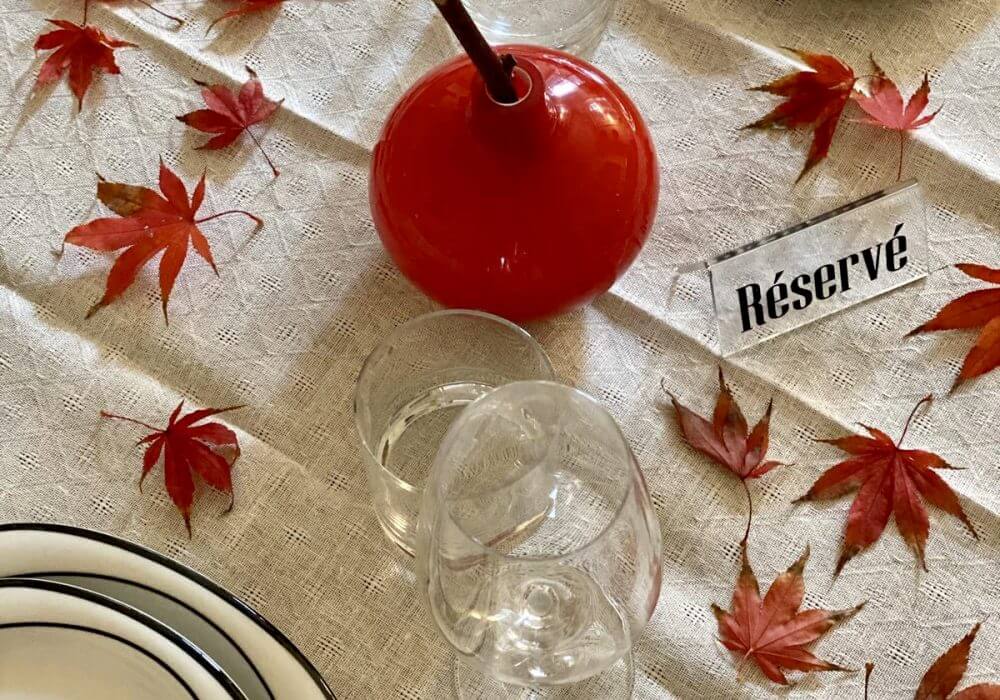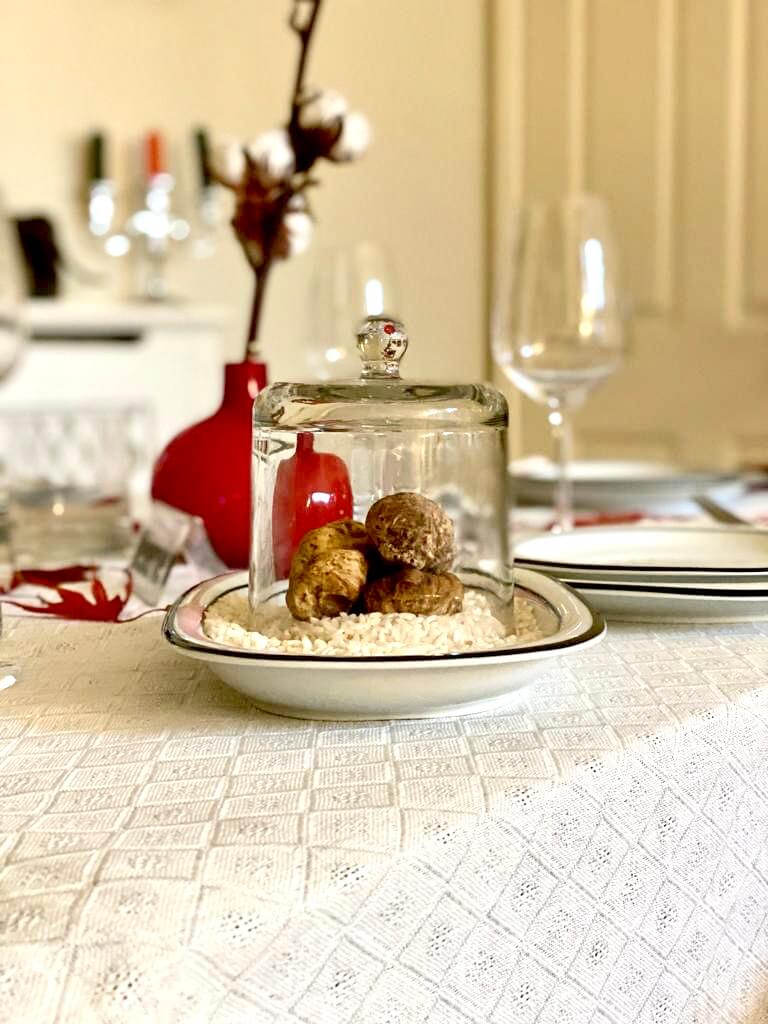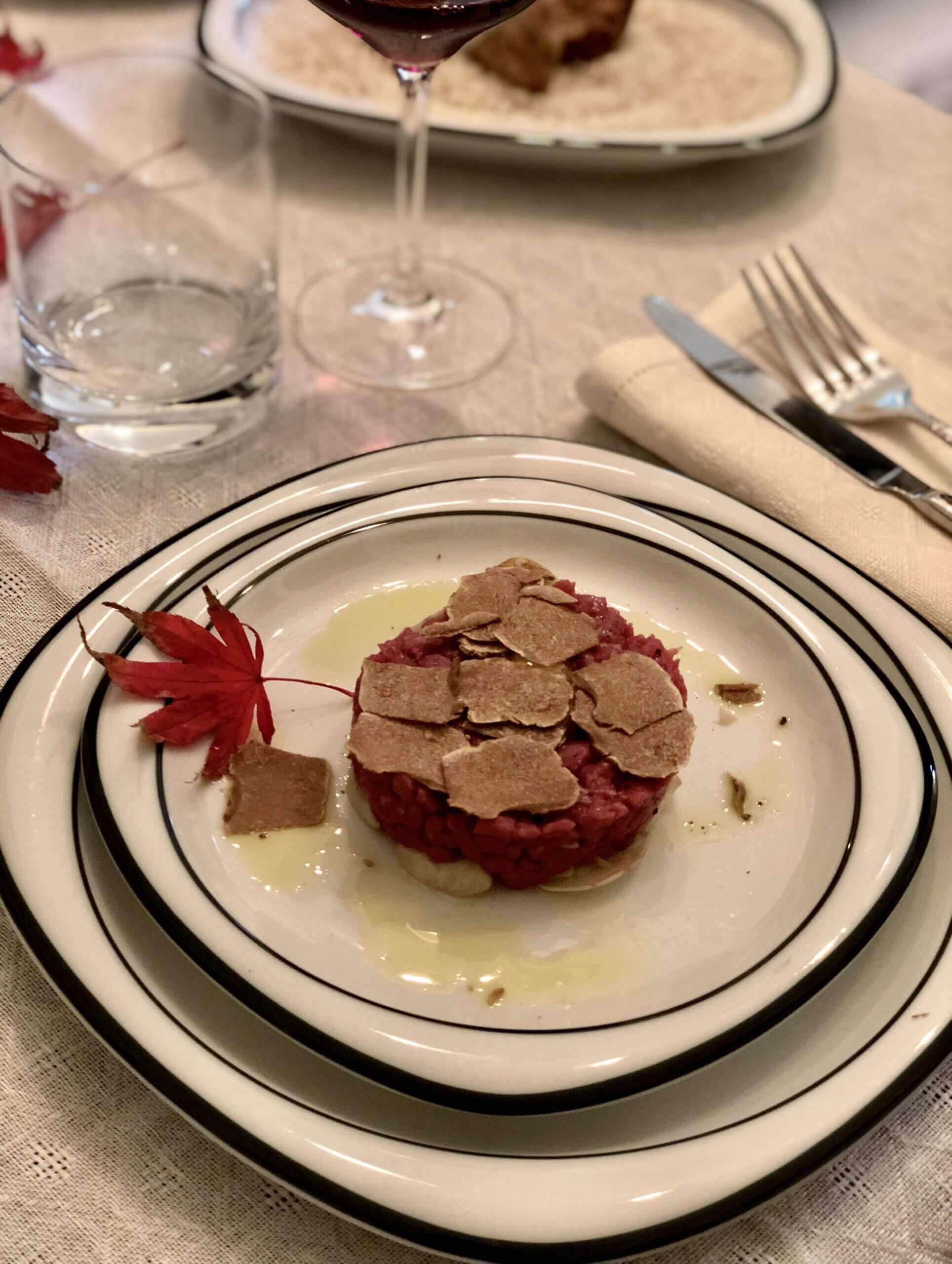Words and photos by Andrea

I must say I have thing for table setting and “mise en place”, and I was lucky enough to marry a person who loves to cook and does it extremely well: you can call him Chef Baco!
We thought about combining our two passions to create this section of the journal that will be dedicated to inspire you with recipes and mise en place ideas, proposing handcrafted brands to set the table and seasonal ingredients to be cooked.
As we have just entered in December, we’ll start with the theme of Autumn!
The menu has been defined based on the seasonal offering and themed around Alba’s white truffle and Porcini mushrooms. For this issue, Chef Baco selected a starter that is easy to make, quick and it can also be proposed as a main course simply doubling the doses indicated below.
500 gr of beef fillet
4 quail eggs
2 porcini mushrooms (depending on their size, it might be that one is enough)
Salt and pepper q.s.
Maldon salt q.s.
Extra virgin olive oil q.s.
Italian white truffle q.s.
Truffle slicer
Tartare ring
Cut the filet in half and then into thin slices. Stack the slices, then cut them into small dice. Season it with some salt and black pepper.
Place the tartare ring over a starter plate and thinly slice the mushroom stalk using the truffle slicer creating a sort of carpaccio as a base for the tartare. Add some olive oil, salt and pepper.
Place 1/4 of the diced meat over the mushroom carpaccio inside the ring, then press it a little bit and remove the ring.
Create a small dimple in the middle of the meat tartare and place 1 quail egg’s yolk.
Add a sprinkling of Maldon salt, a little bit of extra virgin olive oil and decorate the plate with one autumn leaf.
The white truffle must be sliced extremely thinly in oder to emit all its flavour. The best is to slice it live in front of your guest once you have served the dish!
To dress the table I used one of the gorgeous table clothes hand made by Carnica Arte Tessile, in Friuli. This company has over 50 years experience in the house-holding linen production following the handcraft tradition of this area of Friuli, Carnia. The weaving art in Carnia is an antique tradition, well rooted in the community from the early 1700’s. Carnica Arte Tessile proposes elegant, but simple and timeless creations.
To decorate the table I bought a couple of cotton flower branches at the local flower market and put them in a red Murano vase. During my morning coffee walk, I picked some autumn leafs to be placed over the table to add some movement to the composition and kept some of them to decorate the courses!
The plates portrayed in these pictures are part of a Rosenthal “Suomi” vintage collection we own.

White truffle

Beef tartare